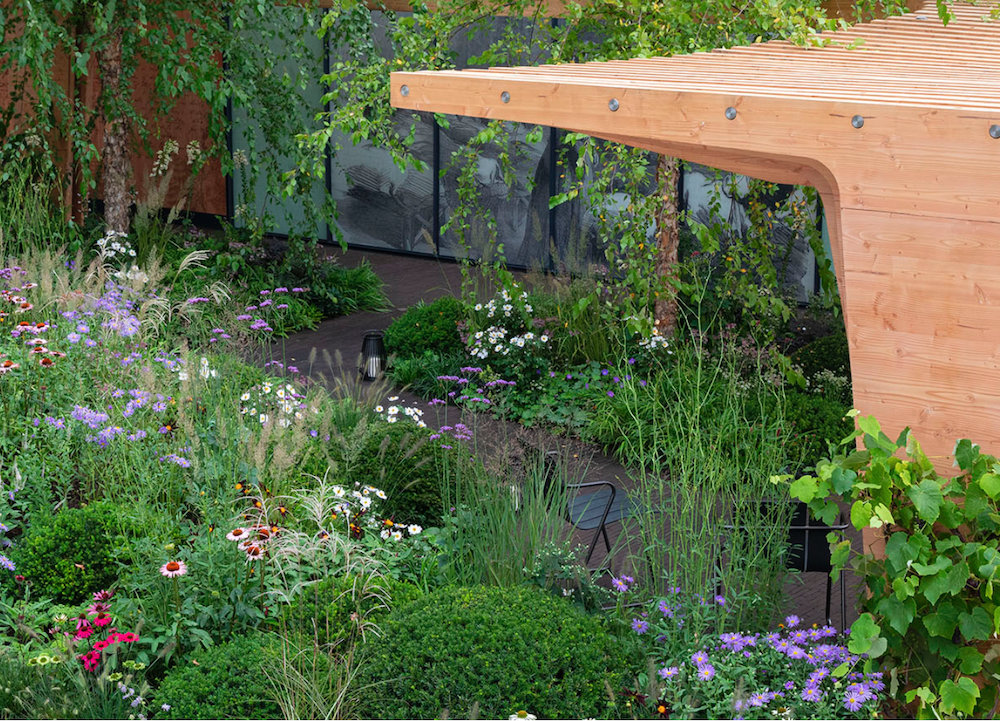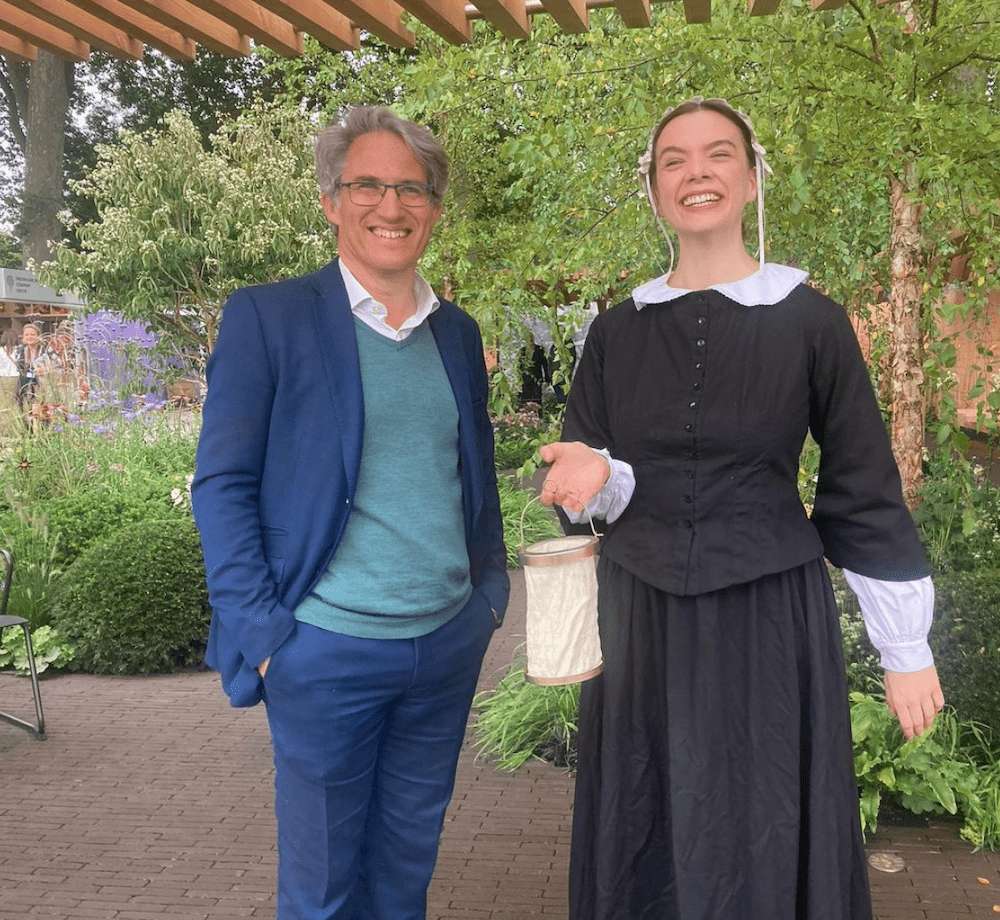Chelsea Flower Show Honors Nurses with Special Florence Nightingale Garden
By Jill Brooke

Among the popular exhibits at the RHS Chelsea Flower Show in London last year was a garden dedicated to the service of nurses who sacrificed so much in helping their fellow citizens as the world navigated Covid.
That garden – which won a silver medal – is now part of a permanent installation at St. Thomas’ Hospital to be enjoyed by both staff and patients.
“The Florence Nightingale Garden – A Celebration of Modern Nursing” was designed by landscape architect Robert Myers and sponsored by the Burdett Trust for Nursing.
The charming courtyard installation highlighted the concept of “nurture through nature” inspired by the idea that the shortest path to recovery leads through a garden.
Furthermore, this restorative garden also honors the 200th birthday of Florence Nightingale.
“The garden celebrates Florence Nightingale’s contribution to modern-day nursing using architectural design and modern, sustainable materials to represent her enduring reforms in hospital construction and vibrant planting to highlight the importance of green spaces for health and recovery,” says Myers. “It has been a wonderful challenge and reflects my own passion for creating contemporary landscapes in historically and culturally significant contexts.”
The garden evokes key elements of Florence Nightingale’s life: pale concrete and timber represent the materials that she endorsed for hospital construction; a reflecting pool references her insights into drainage and cleanliness, and the plants in the garden include some found in her own pressed flower collection as well as plants with strong medicinal properties which were used in the 19th century. In addition, images of Florence are etched on glass windows, and echoes of her handwriting appear to be inscribed onto the concrete walls to embody her extensive writing in support of healthcare reform.
The garden included “autumn flowering plants and grasses including the stunning black dahlia ‘Verrone’s Obsidian’, and various varieties of echinacea – which is a medicinal plant, of course,” adds Myers. “Other medicinal plants that might well have been in Florence Nightingale’s nurse’s bag, such as Chinese rhubarb and witch hazel, are also included.”
There has been increasing research around this idea and hospitals have found recuperation rates improve when people are around gardens and flowers.
Dr. Oliver Sachs in his essay “Why We Need Gardens,” writes about how patients who were unable to function inside a hospital seemed to come alive in a garden.
He writes, “Clearly, nature calls to something very deep in us. Biophilia, the love of nature and living things is an essential part of the human condition.”
Sacks uses another word, “hortophilia,” to describe the deep bond people have with gardens. It is the desire to interact with nature, to manage and tend a garden, to water a sagging plant, deadhead a geranium.
Sacks was amazed to find that neurologically impaired patients, incapable of tying their own shoe laces, immediately knew how to plant a seedling in a garden. “The effects of nature’s qualities on health are not only spiritual and emotional but physical and neurological,” he concluded. “I have no doubt that they reflect deep changes in the brain’s physiology, and perhaps even its structure.”
Even prior to 2020, nursing shortages were becoming a problem due to burn-out. As Linda Lee wrote, ” an award-winning study of nurses in a Portland hospital published at the end of 2018 says that a 30-minute break in a garden did a great deal more to relieve stress and restore nurses’ equilibrium than the same time spent in a break room.”
In London, this beautiful garden is sparking conversations about how hospitals can design gardens more efficiently and incorporate more gardens.

Jill Brooke is a former CNN correspondent, Post columnist and editor-in-chief of Avenue and Travel Savvy magazine. She is an author and the editorial director of FPD and floral editor for aspire design and home magazine
